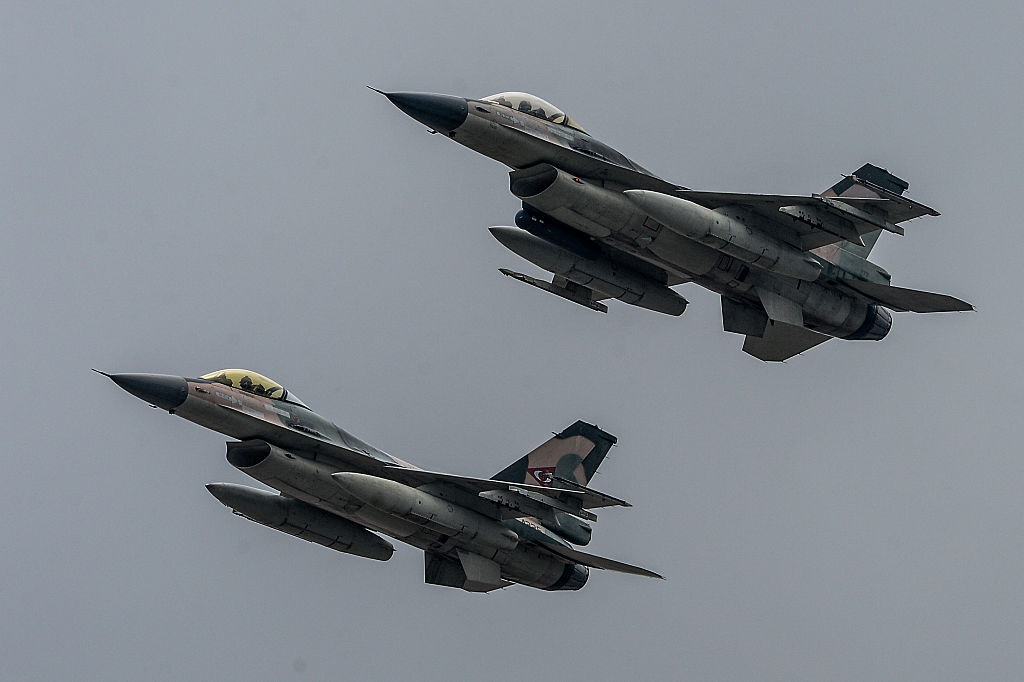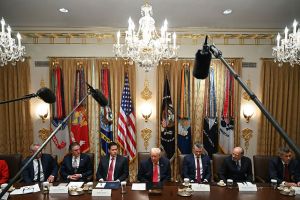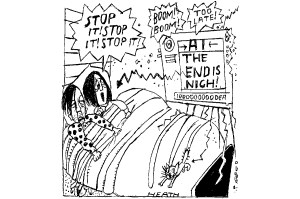First the boat, then the buzz. On Tuesday, an American strike in the Caribbean shredded a vessel ferrying narcotics out of Venezuela, killing eleven alleged members of the Tren de Aragua gang – which Caracas, strategically, dismissed as an AI hallucination. Two days later, Nicolás Maduro tried his own spectacle, dispatching a pair of F-16s to roar over the USS Jason Dunham, one of the U.S. destroyers recently sent on a counter-narcotics patrol off Venezuela’s coast.
The maneuvers – and the steady drumbeat of pressure that preceded them – have regime-changers daydreaming about intervention and restrainers losing sleep. But before mistaking the noise for reality, it’s worth asking: what is Washington trying to achieve?
Those who prefer tidy binaries – many of the journalists covering this beat – often misread what President Donald Trump’s administration is doing. One week, the president is cast as Liz Cheney’s hawk; the next, he is said to have sent Special Envoy Richard Grenell on a mission to befriend Marxists. The trick is not taking the headlines at face value, but tracing the pattern of moves rather than the noise of actions.
Though often caricatured as a schizophrenic strategy, the picture – despite all the buzz – is more coherent than it seems.
The seeming contradictions – Chevron licenses briefly extended, then revoked; Americans released from Venezuelan jails, then a record $50 million placed on Maduro’s head; terrorism designations stacked on top – are not slips in discipline. They form a sequence. Like a chess master sacrificing pawns to open the board, Trump knows how to trade small, reversible concessions to capture the strategic initiative.
Unlike former President Joe Biden, who offered billions in relief tied to a doomed-to-fail democratization plan, Trump has operated on a different level. Rather than pursuing democracy as a single, fixed goal, he has layered multiple vectors – immigration, terrorism and drug trafficking – into his approach. At its core, the dynamic is simple: as Trump has suggested elsewhere, he has the cards – and he intends to hold them.
Biden’s team took Maduro’s crumbs – and even absorbed a few punches. Trump, by contrast, followed the release of all remaining American prisoners in Venezuelan jails – a Trump accomplishment that changed the strategic landscape – not with mere celebration, but with increased pressure.
Reductionist thinking, which treats sanctions or military gestures as blunt instruments, misses the point. To frame the overall effort as “regime change,” “drugs,” or “migration” is to misunderstand the logic at play. Washington’s pressure is designed to put Maduro on the defensive, forcing him into concessions on terms we define. The goal is not to provoke reckless intervention, or to simply asphyxiate the regime because we don’t like them, but to widen the cracks in his system and ensure Maduro bargains from weakness.
Seen this way, the ambiguity is the strategy. Optionality is not confusion, it’s leverage. If Maduro grows anxious enough to cut deals, open channels, or less plausibly, contemplate an exit, that outcome is preferable to the frozen status quo. Those who demand a singular goal misread the nature of power: here, several possible futures count as success.
Biden’s approach yielded neither democracy, market access, nor migration compliance. Trump’s approach acknowledges that something is better than nothing – and wields power with that reality in mind.
If anything stands out this week, it’s that after the U.S. strike – which did, in fact, occur – Caracas’ response looks less like strength and more like a busted gambler rattling coins after a loss. By denying the strike and then sending two jets on a showy flyover, Maduro hopes the media inflates the drama – military strategists, however, aren’t losing any sleep. Fear, not retaliation, is what’s worth noticing here.
Maduro’s touting of 4.5 million “militiamen” is yet another absurd claim that underscores his fear – one that CNN reported without any further explanation. Many of these so-called militiamen are just boys and girls sent into parades because, as a viral video making its rounds in Venezuelan social media show, “Maduro me obligó” (“Maduro forced me”). For context, Ukraine’s active military personnel is at around 1 million, reading that Maduro is parading 4.5 million understandably freaks folks out. Calling it misleading doesn’t do it justice – it’s laughable.
The flyovers and grandiose claims are performative; they mask weakness. Maduro wants to signal that he can act, especially to his citizenry, but the truth is he doesn’t hold the cards – and that’s exactly the point.
Maduro can posture, he can bluff, but he cannot rewrite the balance of power. Washington doesn’t need a singular, dramatic victory; it needs to exploit the fissures and make attainable demands. Every concession, every crack exposed, every gesture coerced is a win – quiet, methodical and unmistakably real. In this game, the noise is an illusion. The leverage, the cards, and the power are what matters.
Don’t confuse the moves for the endgame. With prudence, the US can use both carrot and stick to advance America’s concrete interests. The signal is clear: you don’t want a conflict – and neither do we. Act against us, and consequences could get worse.
Why Venezuelan F-16s buzzing US warships prove Trump right
Ambiguity is the strategy

Two Venezuelan Air Force F-16 fighter jets (Getty)

























Leave a Reply